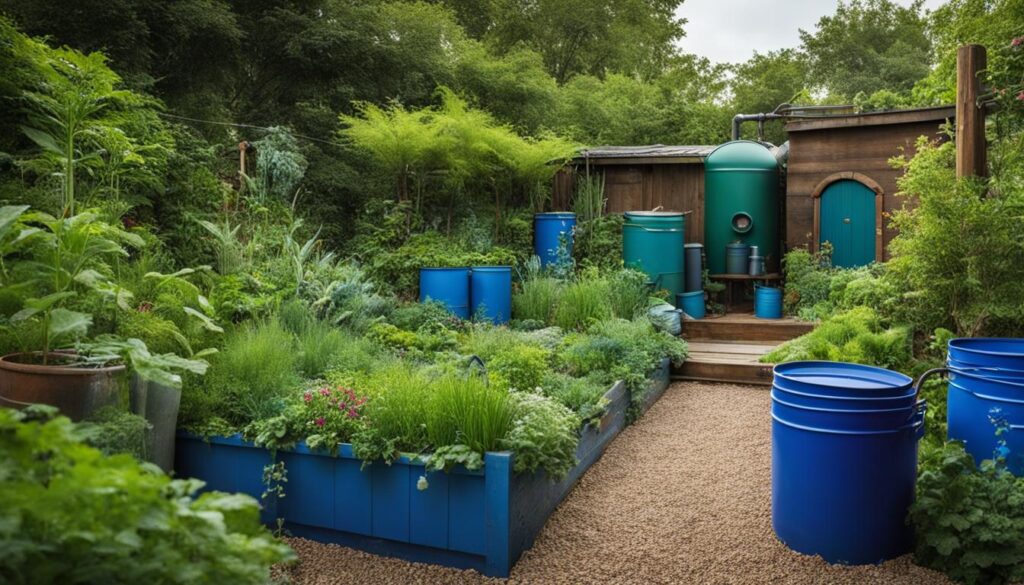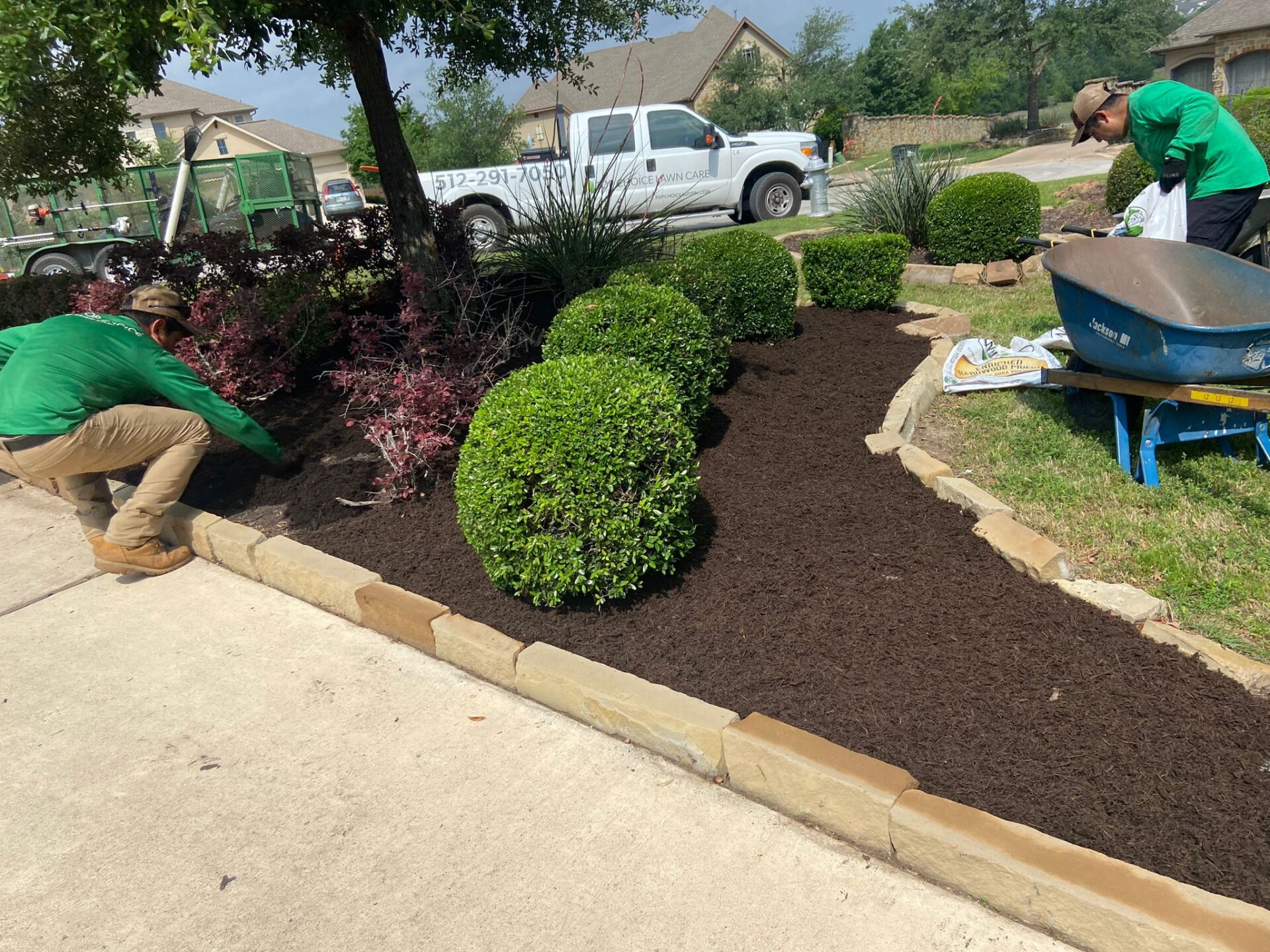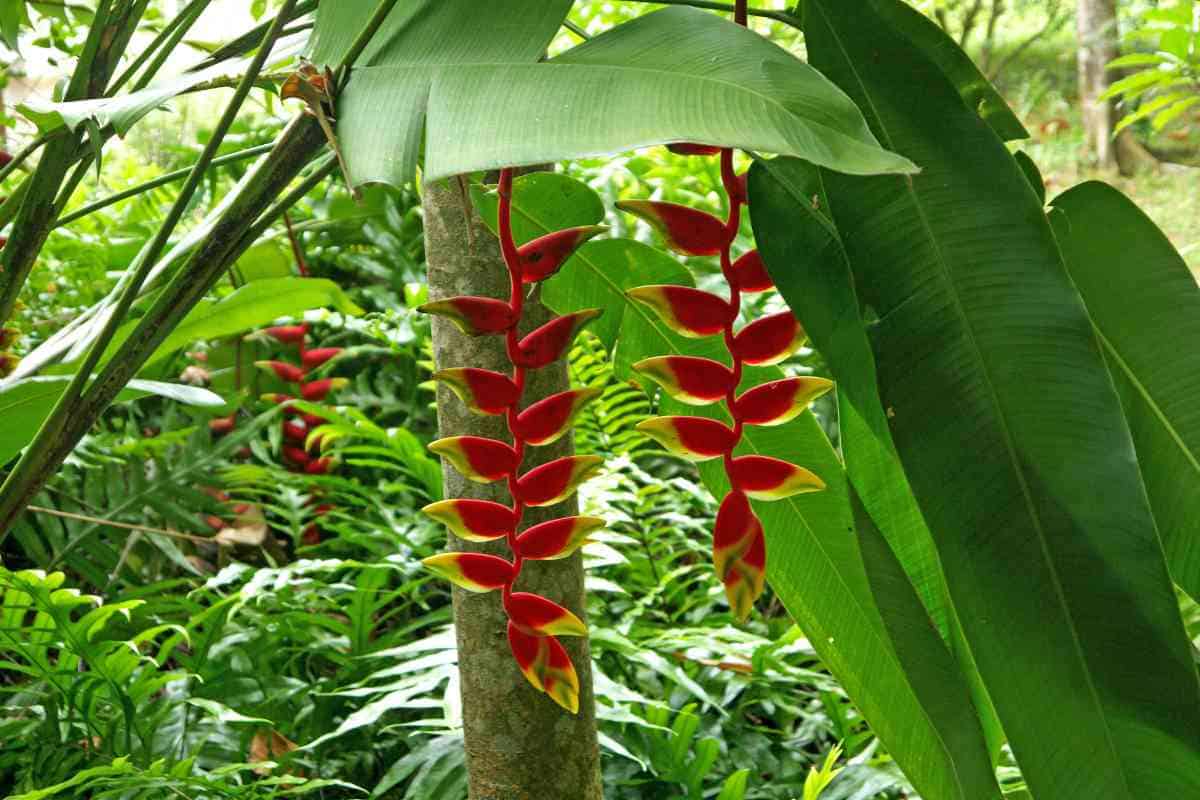
The gentle whisper of leaves rustling in the breeze, the vibrant hues of blooming flowers, the earthy scent of damp soil – these are the sensory delights that define a thriving garden. But behind this idyllic facade lies a fundamental truth: gardens, and indeed, all life, depend on water. In an era marked by increasing water scarcity and the urgent need for environmental stewardship, the way we manage water in our gardens is more critical than ever. This comprehensive guide delves into the art and science of sustainable garden water management, providing you with the knowledge and practical strategies to cultivate a lush, beautiful, and water-wise outdoor space. We’ll explore everything from understanding your local climate and soil to implementing cutting-edge irrigation techniques and embracing drought-tolerant landscaping. Get ready to transform your garden into a testament to sustainable living, where beauty and responsibility flourish hand in hand.
Understanding the Imperative: Why Sustainable Water Management Matters
Before we dive into the ‘how,’ let’s address the ‘why.’ The importance of sustainable garden water management extends far beyond simply saving a few dollars on your water bill. It’s about contributing to a larger movement towards environmental responsibility and ensuring the long-term health of our planet. Here’s a closer look at the key reasons why sustainable water management is so crucial:
- Water Conservation: In many regions, water resources are under immense pressure due to factors like population growth, climate change, and inefficient water use. Implementing sustainable practices in your garden directly contributes to conserving this precious resource, ensuring that there’s enough water for future generations and for essential ecosystems.
- Environmental Protection: Overwatering can lead to water runoff, which carries fertilizers, pesticides, and other pollutants into local waterways. This contamination harms aquatic life and can degrade water quality. Sustainable water management minimizes runoff, protecting our rivers, lakes, and oceans.
- Healthy Soil: Overwatering can also damage soil structure, leading to compaction and reduced aeration. This makes it difficult for plant roots to thrive and can increase the risk of fungal diseases. Sustainable practices, on the other hand, promote healthy soil, which acts like a sponge, absorbing and retaining water, reducing the need for frequent irrigation.
- Cost Savings: While the initial investment in sustainable water management systems might seem daunting, the long-term cost savings are significant. By reducing your water consumption, you’ll see a noticeable decrease in your water bill. Furthermore, healthy plants are less susceptible to pests and diseases, reducing the need for expensive treatments.
- Resilience to Climate Change: As climate change intensifies, we’re experiencing more frequent droughts and extreme weather events. Sustainable water management practices make your garden more resilient to these challenges. Drought-tolerant plants and efficient irrigation systems can help your garden survive and thrive even during prolonged dry spells.
Assessing Your Garden: The Foundation of a Water-Wise Approach
Before you start implementing specific water management strategies, it’s crucial to understand your garden’s unique characteristics. This involves assessing several key factors that influence water needs and availability. Taking the time to do this will pay dividends in the long run, allowing you to tailor your approach to your specific circumstances and maximize your water savings.
1. Climate and Microclimates
Your local climate is the most significant factor influencing your garden’s water needs. Consider these aspects:
- Rainfall Patterns: How much rain does your area receive annually? Are there distinct wet and dry seasons? Understanding your rainfall patterns will help you determine the best times to water and the need for supplemental irrigation.
- Temperature: Higher temperatures increase the rate of evaporation, leading to greater water loss from the soil and plants. Consider the average temperatures in your area and how they fluctuate throughout the year.
- Humidity: High humidity reduces the rate of evaporation, meaning plants may need less frequent watering.
- Microclimates: Within your garden, there may be variations in temperature, sunlight, and wind exposure. For example, a south-facing wall can create a warmer microclimate, while a shaded area under a tree will be cooler and retain moisture longer. Observe these microclimates and plant accordingly.
2. Soil Analysis
Soil is the foundation of any successful garden, and its ability to retain water is critical. Conduct a soil test to determine your soil type and composition. This information will help you choose the right plants and irrigation methods. Key soil characteristics to consider include:
- Soil Type: Different soil types have varying water-holding capacities. Sandy soil drains quickly, while clay soil retains water for longer periods. Loamy soil, a mixture of sand, silt, and clay, is generally considered the ideal soil type for gardening.
- Drainage: Good drainage is essential to prevent waterlogging, which can damage plant roots. Test your soil’s drainage by digging a hole and filling it with water. If the water drains away within a few hours, your soil has good drainage. If it takes longer, you may need to amend your soil.
- Organic Matter: Adding organic matter, such as compost or well-rotted manure, improves soil structure, increases water retention, and provides essential nutrients for plant growth.
3. Plant Selection
Choosing the right plants for your garden is one of the most important steps in sustainable water management. Select plants that are well-suited to your local climate and soil conditions. Consider these factors:
- Native Plants: Native plants are naturally adapted to your local climate and typically require less water than non-native species. They are also beneficial for local wildlife.
- Drought-Tolerant Plants: Drought-tolerant plants can survive and thrive with minimal water, making them ideal for water-wise gardens. Research plants that are known for their low water requirements.
- Plant Grouping: Group plants with similar water needs together. This allows you to water each area of your garden efficiently, without overwatering or underwatering.
- Sun and Shade Requirements: Consider the sunlight and shade requirements of each plant. Plants that prefer shade will generally need less water than those that thrive in full sun.
Watering Wisely: Efficient Irrigation Techniques
Once you’ve assessed your garden and chosen the right plants, it’s time to focus on efficient irrigation. The goal is to deliver water directly to the plant roots, minimizing water loss through evaporation and runoff. Here are some of the most effective irrigation techniques:
1. Drip Irrigation
Drip irrigation is one of the most water-efficient irrigation methods. It delivers water slowly and directly to the plant roots, minimizing water waste. Here’s how it works:
- Components: Drip irrigation systems typically consist of a water source, a filter, a pressure regulator, a main line, and drip emitters.
- Installation: The main line is run along the rows of plants, and drip emitters are placed near the base of each plant.
- Benefits: Drip irrigation is highly efficient, reduces water waste, minimizes weed growth, and delivers water directly to the root zone.
- Maintenance: Regularly check the system for leaks and clogs. Flush the system periodically to remove debris.
2. Soaker Hoses
Soaker hoses are another effective way to deliver water directly to the soil. They are made of porous material that slowly releases water along their length. Here’s how to use them:
- Placement: Lay the soaker hoses along the rows of plants, ensuring they are close to the base of the plants.
- Watering: Turn on the water slowly and allow the hoses to soak the soil.
- Benefits: Soaker hoses are easy to install and use, and they deliver water directly to the soil, reducing water waste.
- Considerations: Avoid overwatering, which can lead to fungal diseases.
3. Sprinkler Systems
While less efficient than drip irrigation or soaker hoses, sprinkler systems can be used effectively if managed properly. Here’s how to optimize their use:
- Types: Choose the right type of sprinkler for your needs. Consider impact sprinklers, rotary sprinklers, and oscillating sprinklers.
- Timing: Water in the early morning or late evening to minimize water loss through evaporation.
- Coverage: Ensure that the sprinklers are adjusted to water only the areas that need it, avoiding sidewalks and driveways.
- Efficiency: Consider using smart sprinkler controllers that adjust watering schedules based on weather conditions.
4. Hand Watering
Hand watering with a watering can or hose is a simple and effective way to water your plants, especially for small gardens or container plants. Here’s how to do it right:
- Target the Roots: Direct the water towards the base of the plants, avoiding wetting the foliage.
- Water Deeply: Water deeply and infrequently, allowing the water to penetrate the soil.
- Observe Your Plants: Pay attention to your plants’ needs and water them when they show signs of thirst, such as wilting leaves.
Water Harvesting and Greywater Systems: Innovative Solutions
For those seeking to take their water management to the next level, consider incorporating water harvesting and greywater systems into your garden. These innovative solutions can significantly reduce your reliance on municipal water and further enhance your garden’s sustainability.
1. Rainwater Harvesting
Rainwater harvesting involves collecting rainwater from rooftops or other surfaces and storing it for later use. Here’s how it works:
- Components: A rainwater harvesting system typically includes a collection surface (e.g., a roof), gutters, downspouts, a filter, a storage tank, and a distribution system.
- Installation: Install gutters and downspouts to direct rainwater into the storage tank. Install a filter to remove debris and contaminants.
- Uses: Use the harvested rainwater to water your garden, wash your car, or flush your toilets.
- Benefits: Rainwater harvesting reduces your water bill, conserves water resources, and provides a source of clean water for your garden.
- Regulations: Check local regulations regarding rainwater harvesting before installing a system.
2. Greywater Systems
Greywater systems use water from household activities, such as showering, washing dishes, and doing laundry, to irrigate your garden. Here’s how they work:
- Types: There are two main types of greywater systems: simple systems and complex systems. Simple systems direct greywater to the garden without treatment, while complex systems treat the greywater before distribution.
- Installation: Simple systems are relatively easy to install, while complex systems require more expertise.
- Uses: Use greywater to water your garden, especially drought-tolerant plants.
- Benefits: Greywater systems conserve water, reduce your water bill, and provide nutrients for your plants.
- Regulations: Check local regulations regarding greywater systems before installing one.
Soil Health and Water Retention: Building a Water-Wise Foundation
Healthy soil is the cornerstone of a water-wise garden. By improving your soil’s structure and composition, you can increase its water-holding capacity and reduce the need for frequent watering. Here are some key strategies for building healthy soil:
1. Composting
Composting is a natural process that breaks down organic matter into a nutrient-rich soil amendment. Here’s how to incorporate composting into your garden:
- Materials: Compost your kitchen scraps, yard waste, and other organic materials.
- Process: Layer the materials in a compost bin or pile, ensuring a balance of green (nitrogen-rich) and brown (carbon-rich) materials.
- Benefits: Compost improves soil structure, increases water retention, provides essential nutrients, and reduces the need for chemical fertilizers.
2. Mulching
Mulching is the practice of covering the soil surface with a layer of organic or inorganic material. Here’s how mulching benefits your garden:
- Materials: Use organic mulches, such as wood chips, straw, or shredded leaves, or inorganic mulches, such as gravel or landscape fabric.
- Application: Apply a layer of mulch around your plants, leaving a few inches of space around the stems.
- Benefits: Mulch reduces water evaporation, suppresses weed growth, moderates soil temperature, and improves soil health.
3. Soil Amendments
Amend your soil with organic matter to improve its structure and water-holding capacity. Consider these options:
- Compost: Add compost to your soil to improve its fertility and water retention.
- Manure: Well-rotted manure adds nutrients and improves soil structure.
- Cover Crops: Plant cover crops, such as clover or rye, to improve soil health and prevent erosion.
Drought-Tolerant Landscaping: Embracing Water-Wise Design
Drought-tolerant landscaping, also known as xeriscaping, is a design approach that minimizes water use by incorporating drought-tolerant plants, efficient irrigation techniques, and water-wise design principles. Here’s how to embrace drought-tolerant landscaping:
1. Plant Selection
Choose plants that are well-suited to your local climate and require minimal water. Consider these options:
- Native Plants: Native plants are naturally adapted to your local climate and require less water than non-native species.
- Succulents: Succulents, such as cacti and sedums, store water in their leaves and stems, making them highly drought-tolerant.
- Mediterranean Plants: Plants from Mediterranean climates, such as lavender and rosemary, are adapted to hot, dry summers.
2. Grouping Plants by Water Needs
Group plants with similar water needs together to ensure that each area of your garden receives the appropriate amount of water. This prevents overwatering or underwatering.
3. Using Mulch
Apply a thick layer of mulch around your plants to reduce water evaporation and suppress weed growth.
4. Efficient Irrigation
Use efficient irrigation techniques, such as drip irrigation or soaker hoses, to deliver water directly to the plant roots.
5. Hardscaping
Incorporate hardscaping elements, such as patios, pathways, and walls, to reduce the amount of lawn area and minimize water consumption.
Maintenance and Monitoring: Keeping Your Garden Thriving
Sustainable water management is not a one-time effort; it requires ongoing maintenance and monitoring to ensure that your garden remains healthy and water-wise. Here are some key maintenance tips:
1. Regular Inspections
Inspect your irrigation systems regularly for leaks, clogs, and other issues. Check your plants for signs of stress, such as wilting leaves, and adjust your watering schedule accordingly.
2. Adjusting Watering Schedules
Adjust your watering schedule based on weather conditions and plant needs. Water more frequently during hot, dry periods and less frequently during cool, wet periods.
3. Pruning and Weeding
Prune your plants regularly to remove dead or diseased branches and improve air circulation. Weed your garden regularly to prevent weeds from competing with your plants for water and nutrients.
4. Soil Testing
Conduct soil tests periodically to monitor soil health and nutrient levels. Amend your soil as needed to maintain optimal conditions for plant growth.
Conclusion: A Thriving Garden, A Sustainable Future
Sustainable garden water management is not just a trend; it’s a necessity. By embracing water-wise practices, you can create a beautiful and thriving garden while contributing to the conservation of our precious water resources. From understanding your climate and soil to implementing efficient irrigation techniques and embracing drought-tolerant landscaping, the strategies outlined in this guide provide a roadmap for creating a garden that is both aesthetically pleasing and environmentally responsible. Remember, every drop counts. By making conscious choices about how we manage water in our gardens, we can all play a part in building a more sustainable future, one beautiful bloom at a time. So, take the plunge, get your hands dirty, and embark on the journey towards a water-wise garden. Your garden, and the planet, will thank you for it.


